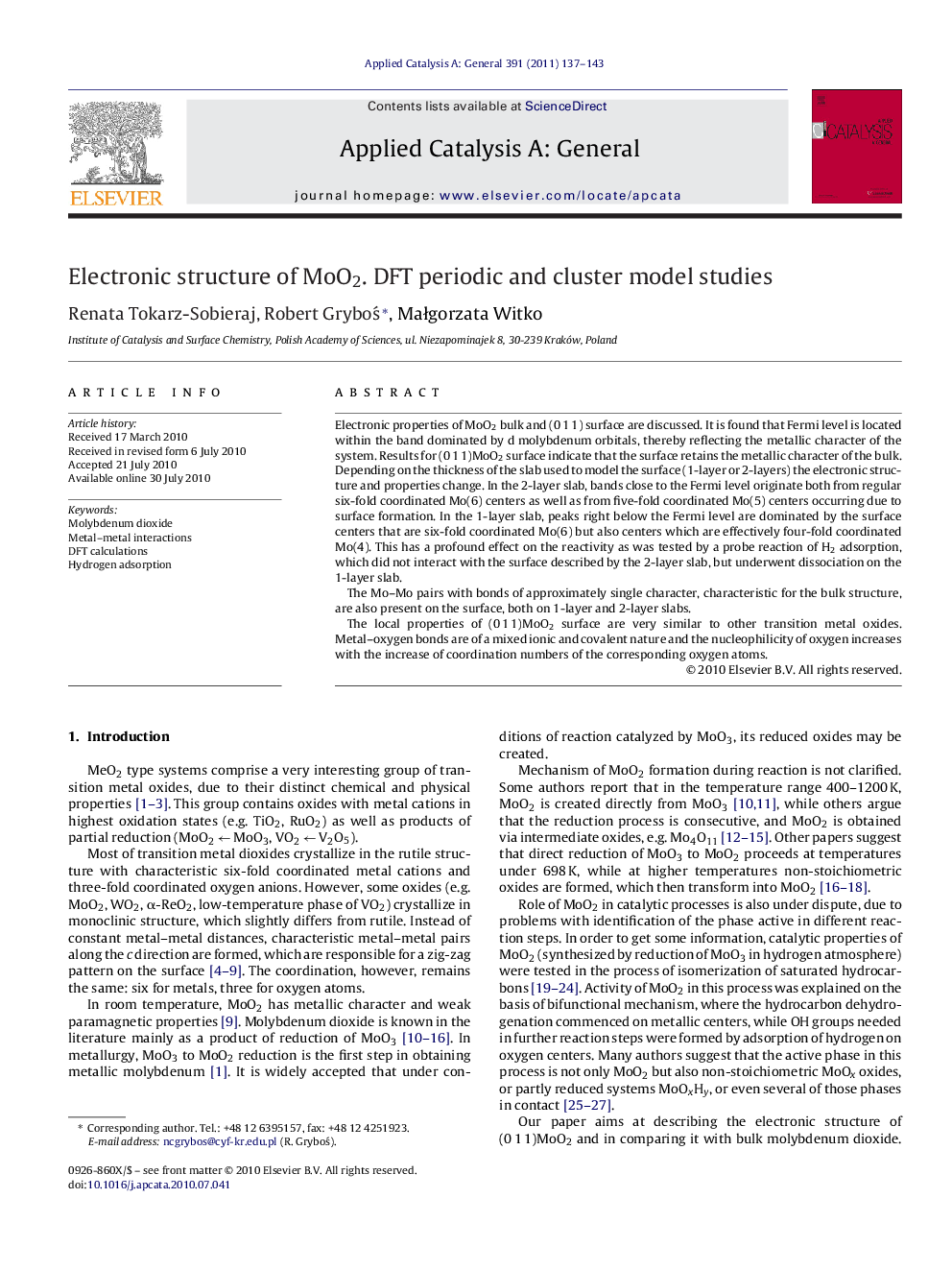| Article ID | Journal | Published Year | Pages | File Type |
|---|---|---|---|---|
| 41631 | Applied Catalysis A: General | 2011 | 7 Pages |
Electronic properties of MoO2 bulk and (0 1 1) surface are discussed. It is found that Fermi level is located within the band dominated by d molybdenum orbitals, thereby reflecting the metallic character of the system. Results for (0 1 1)MoO2 surface indicate that the surface retains the metallic character of the bulk. Depending on the thickness of the slab used to model the surface (1-layer or 2-layers) the electronic structure and properties change. In the 2-layer slab, bands close to the Fermi level originate both from regular six-fold coordinated Mo(6) centers as well as from five-fold coordinated Mo(5) centers occurring due to surface formation. In the 1-layer slab, peaks right below the Fermi level are dominated by the surface centers that are six-fold coordinated Mo(6) but also centers which are effectively four-fold coordinated Mo(4). This has a profound effect on the reactivity as was tested by a probe reaction of H2 adsorption, which did not interact with the surface described by the 2-layer slab, but underwent dissociation on the 1-layer slab.The Mo–Mo pairs with bonds of approximately single character, characteristic for the bulk structure, are also present on the surface, both on 1-layer and 2-layer slabs.The local properties of (0 1 1)MoO2 surface are very similar to other transition metal oxides. Metal–oxygen bonds are of a mixed ionic and covalent nature and the nucleophilicity of oxygen increases with the increase of coordination numbers of the corresponding oxygen atoms.
Graphical abstractFigure optionsDownload full-size imageDownload high-quality image (282 K)Download as PowerPoint slideResearch highlights▶ (0 1 1)MoO2 density of states from DFT calculations agree well with ARUPS spectra. ▶ Strong bond was found between characteristic Mo–Mo pairs, in bulk and on the surface. ▶ Mo(4) active sites are found on thin layer of MoO2, with unique chemical properties.
